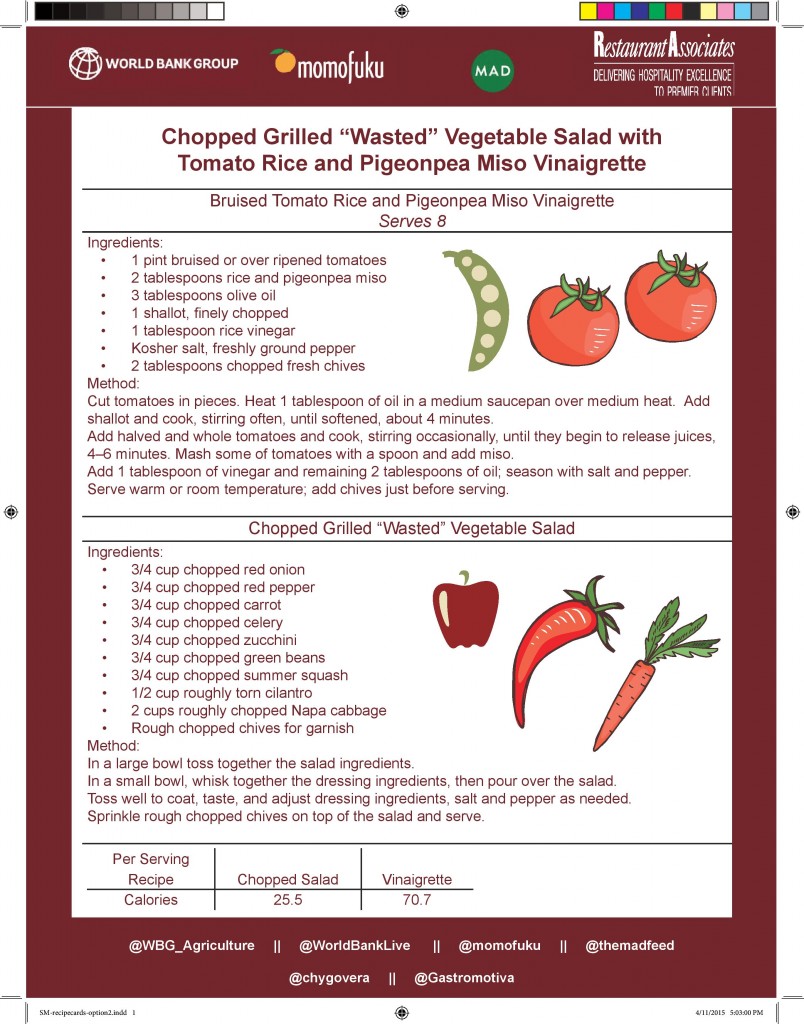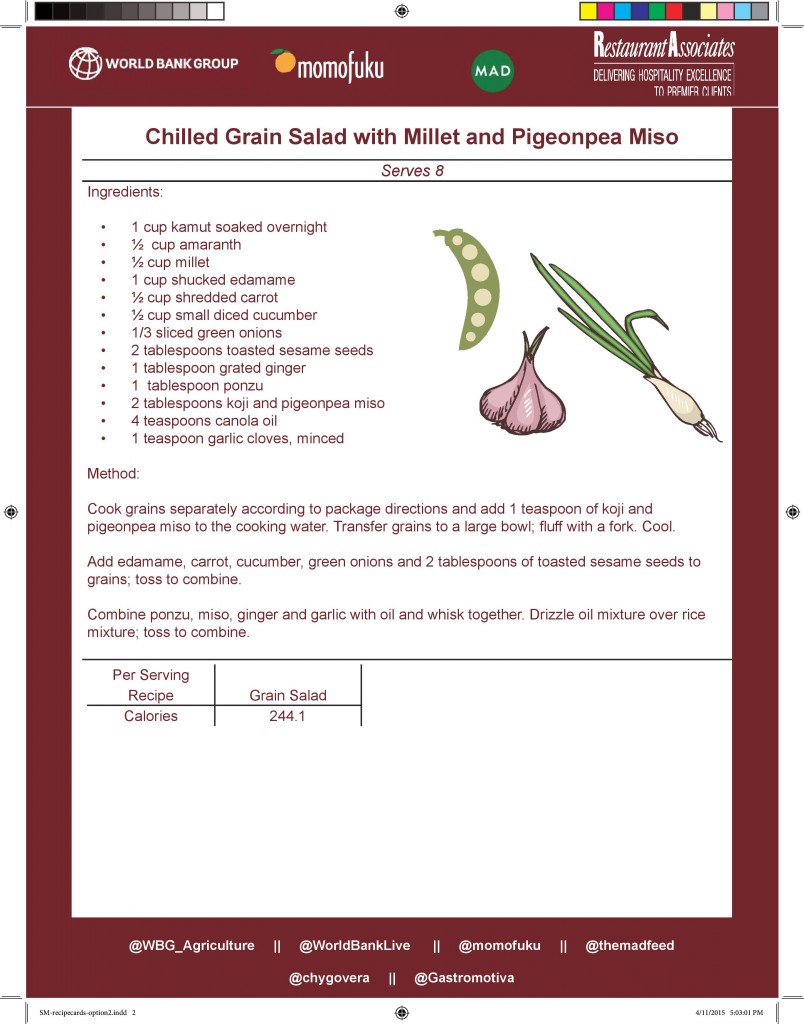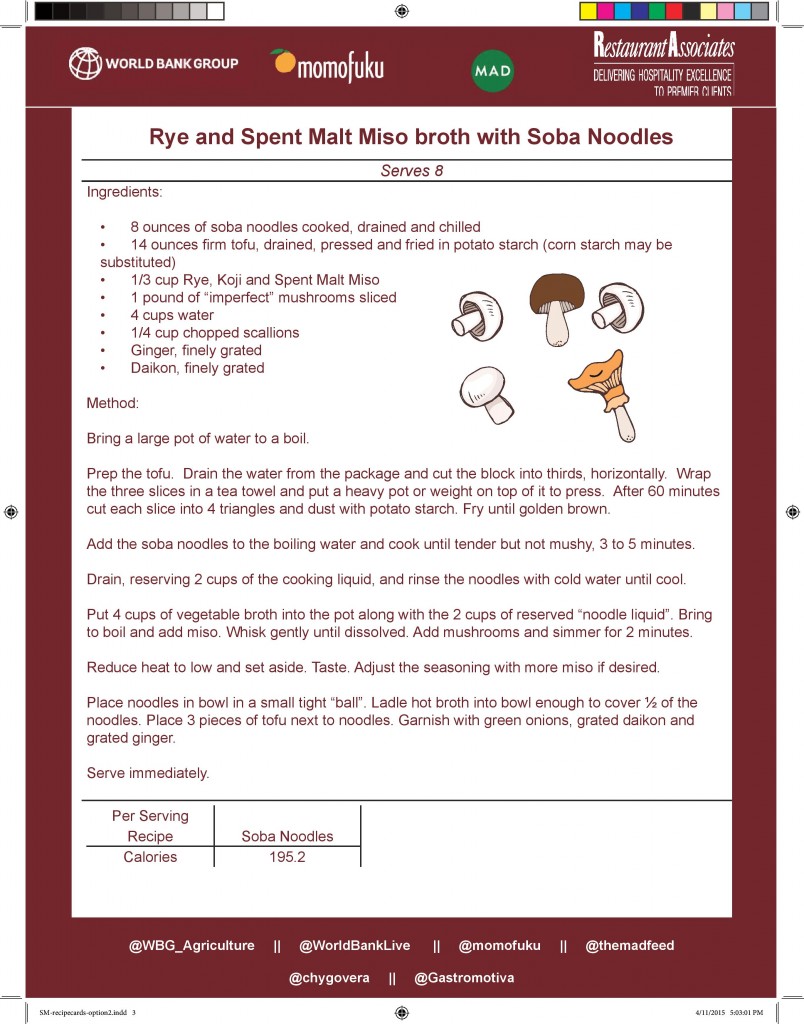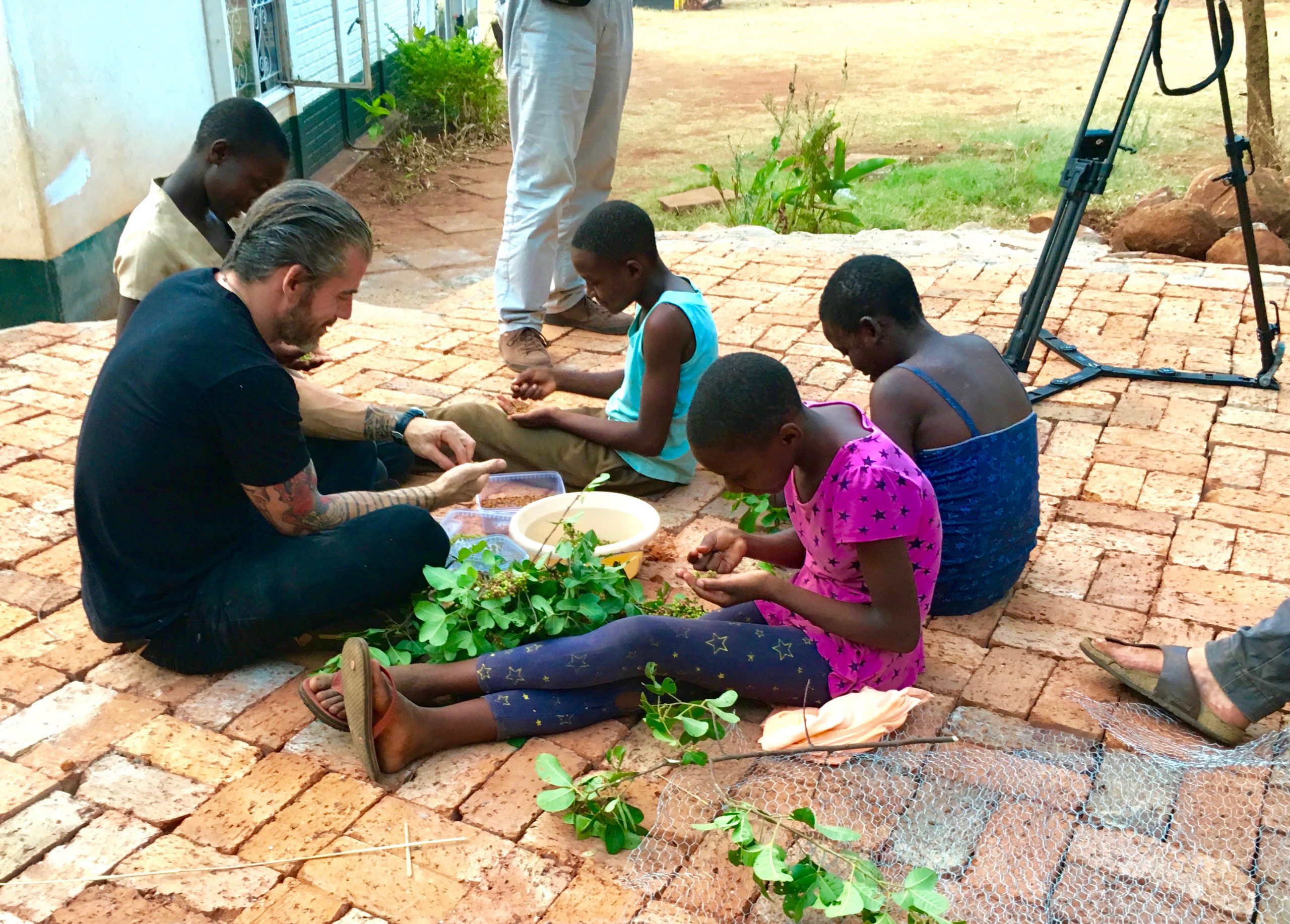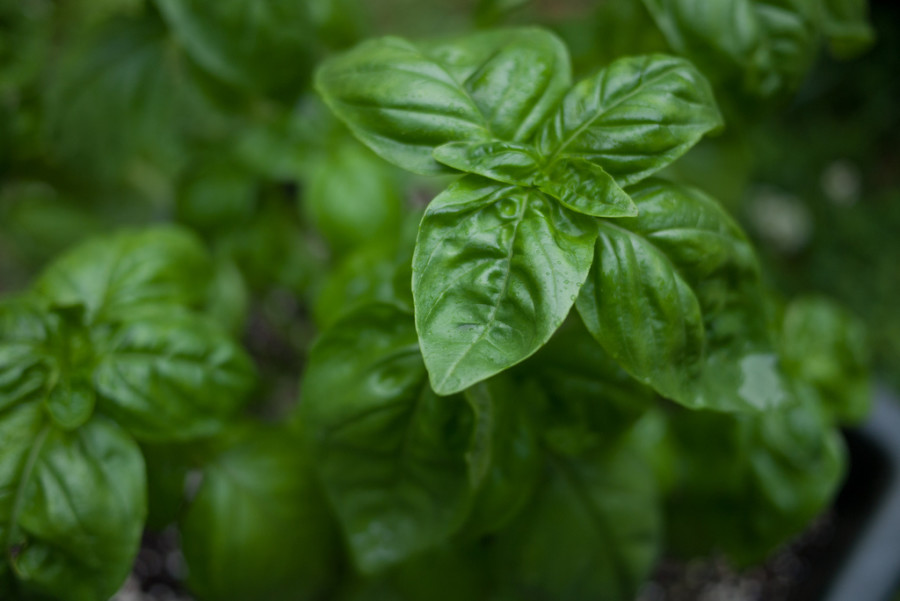Turning Trash Into Delicious Things: a Brief Guide
1.3 billion tonnes of edible food go to waste every year, and 9 billion people need to be fed in 2050. So, when it came time to feeding the people who attended our event on this subject at the World Bank, we wanted to use the meal to contextualize some of these issues—to put into practice the theory of using flavor as a guide to thinking about and solving these problems.
A natural question arose—if we need to feed 9 billion people in 2050, how could we better use what we already produce?
We’re always looking for delicious, efficient, scalable, and clever ways to deal with food waste. In developed parts of the world, a big source of food waste is from plants that are grown and never make it to market because of cosmetic standards set by retailers, as well as waste in the kitchen. The Portuguese activist Isabel Soares spoke about creating alternative distribution networks for “ugly fruit” at MAD4, and Restaurant Associates, who are in charge of staff food at the World Bank, were able to arrange a source with their produce supplier for “rejected” but nonetheless tasty vegetables.
On an artisanal-industrial scale, spent grains—the malted barley that is steeped in water to make beer—is a major source of waste for craft brewers, with (roughly) 8 kilos of leftover barley for every 50 liters of finished beer. It can be used as animal fodder, but you can go beyond that, since it also presents creative flavor opportunities.
Orphan Crops, under-researched plants which aren’t generally traded internationally but nonetheless have a great gastronomic and nutritional significance where they are grown and are important for food sovereignty and security for millions of people, were also on the agenda. They’re not waste products, but we saw potential in underutilized millet and pigeon peas, two of the most important of these crops.
At MAD, we research and experiment a lot with different forms of fermentation—and almost any ingredient is fermentable using some technique if we work based on its composition and chemical properties. Millet, spent grains, and pigeon peas have a decent amount of protein and carbohydrates, which makes them well-suited for transformation into miso-like products, which involve an initial fermentation to create a product called koji by an enzyme-rich mold (Aspergillus oryzae) that breaks down the proteins and carbohydrates into flavorful sugars and amino acids. A second fermentation follows, which consists of adding salt by lactic acid bacteria.
Koji is usually made from rice, barley, or soybeans, and part of the trick of getting A. oryzae to grow properly is hitting the right balance between moisture and air availability, and enabling the mold to penetrate the husk or skin of the grain, often by removing it. Working with the lab at Momofuku, we went through several trials to turn spent grains and millet into koji. There were plenty of failures, but after a couple months of experimentation and aging, we had miso made from millet and pigeon peas, and rice and pigeon peas, as well as tamari (a flavorful soy sauce-like liquid strained from miso) from spent malt, rye grains, and pigeon peas, ready to go. The fermentation processes transformed the starting ingredients from relatively bland and starchy to sweet, rich, almost fruity sauces, in a relatively short amount of time and using relatively low-technology methods.
Here’s a Basic Recipe for Koji
If starting with dry grains (millet, rice, rye, or barley all work), soak overnight in cold water, and then steam (not boil!) for 30-90 minutes until cooked but not very soft or falling apart.
If starting with spent grains, spread on a sheet tray and dry in an oven until squeezing a handful of the grains makes your hand moist, but doesn’t drip water.
Cool the grains to body temperature and sprinkle Aspergillus oryzae spores from a reputable source over the surface of the grains, mix, and keep in a warm (95-100F but not warmer) humid room or box. Mix the koji every 12 hours or so by turning it over by hand. After 36 hours fine white mold should have bound the grains together into a cake and the koji is finished.
If the grains are very wet, or smell rotten or like overripe bananas or cheese, the fermentation has failed and they shouldn’t be consumed.
Here’s a Basic Recipe for Miso
By weight, mix equal parts of the koji you made above with steamed or boiled pigeon peas, soybeans, or spent grains, and mix in a little water by hand until it is wet enough to be malleable but not totally liquid. Weigh this mixture and add 6% salt. Pack the mixture into a bucket, press plastic wrap onto the surface, and weight it with a dinner plate and a brick or a second bucket full of water.
Age in a warm (80-85F) place for 4-6 weeks, until the miso smells pleasantly fermented, perhaps slightly toasty, banana-ish, yeasty, or vinegary. If it smells strange or “off,” trust your instincts and don’t eat it.
The final, collaborative menu, incorporating orphan crops, food waste, and ugly vegetables is reproduced below. Remember to click on the images to enlarge.

